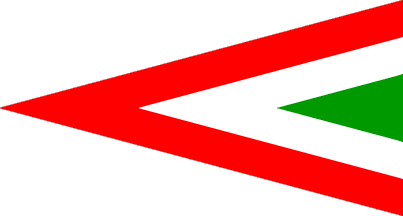
1991-
by Zeljko Heimer, 2 November 2001

Last modified: 2004-08-07 by dov gutterman
Keywords: hungary | air force |
Links: FOTW homepage |
search |
disclaimer and copyright |
write us |
mirrors

1991-
by Zeljko Heimer, 2 November 2001
See also:
Other Sites:
The first markings reported by this site are Austria-Hungary
period. From Insignia
of the Hungarian Air Force from the WWI until the present:
"During the WWI a/c wore the black Cross Patee (later Balkan
Cross) on white and red-white-red strips on the wing tips and the
tail (on tail with the coat of arms for the Navy). No particular
official Hungarian insignia was used in that time. The only
exception was a proposed new Navy ensign, with an old Hungarian
coat of arms added to the Austrian shield on the mid white strip
on the tail (1915). Never made official, it appeared however on
some of the large flying boats. Considering personal markings,
Béla Macourek, CO of Flik 17, had red-white- green strips on the
fuselage of his Aviatik DI, nr 338.02." (Image 1 at this page).
First markings belonged to Hungarian Soviet Republic, 1918-1919 -
we report three seperate marking to this era and show two of them as also done by [cos98] - the missing one is white
ster on red panel. The site report too:" By the decree
(March 24, 1919) a/c of the Red AF were marked with
red-white-green arrows of equal sides, painted on the fuselage
and the wings. Red stars appeared on Apr 25, 1919. First as the
well known red star in a white square, on wings, fuselage and
rudder. Later on camou-flage squares were deleted and stars got
thin outlines "
In 1931, Exercise Markings were used: "During secret
exercises in summer 1931 (crypt. "Csaba"), as a
temporary military insignia a double (St Stephen's) cross was
adopted, painted on the tricolor (7). Next year in the autumn,
during another exercise (crypt. "Sólyom" -
"Hawk"), a roundel was used, with green double cross on
a white background in red outer ring, painted on wings and
fuselage. The tail wore the Hungarian tricolor. It was also
planned for "Alert" mobilization, actually it was later
never used. " (see Exercise Markings 1931)
Our site also reports Exercise Markings 1932:
"green St. Stephen's cross on a white roundel surrounded by
a red outer ring" but the website don't.
On 1 January 1939, Honvéd Légierô - became an independent
branch of the Armed Forces (Honvédség) and adopted aircraft
markings: "As the first insignia red-white-green chevron was
chosen (red outermost), with standard proportions
(heigth:base=2:1), painted on wings and tail (decree of the
Secretary of Defence, Aug 23, 1938, nr 30.418/1938). Measured
along the chevron base (b), the width of the red strip was b/8,
and the base of the green triangle b/4. On the lower/upper
surfaces its place was in the distance 1/7th of the wing's span
from the wingtip, on the tail at the mid height over the tail
planes, with vertex in the direction of flight. On a/c with
multiple tails the chevron was painted on the external surfaces
of the outermost rudders." (See images 16-19 at this
page (same at [cos98]) which
means that the image at Honvéd Légierô 1938-41
is incorrect concering its ratios.
A new roundel was intreduced in 1941 (Proposed
Markings 1941 and Honvéd Légierô 1941-45)
as described by the website: "After the declaration of war
against Soviet Union it turned out that visibility of chevron was
poor and many times German pilots shot at the Hungarian. In
addition, the German pressed for the unified insignia for all of
the Axis powers. For Hungary they even proposed to reintroduce
the Cross Patee. General Staff of the RHAF, on the other hand,
proposed insignia of white cross framed in black in a green
square framed red (decree nr 59.120/ 1941). Experiments shown
that in this form colors are difficult to be recognized. Insignia
was proposed by the AF Command. It differed from the German ones
at least in the inversion of colors. As the purposeful emphasis
of the nationality both the General Staff and the AF Command
proposed the tricolor on the tail planes. The dimensions were
only approximate, and had to be defined for each a/c type. The
new insignia had been finaly approved by Mar 12, 1942 as a white
cross on a black square, on wings and fuselage, and a tricolor on
the tail with the red innermost on tail planes (decree nr
142.415/1942), See images at this
page and this
page, also see <www.compsoc.man.ac.uk/~wingman>
and <www.dalnet.se/~surfcity>.
Variants appear in 1944 (Honvéd Légierô 1944)
as seen in images 37-40 and 64 at this
page.
After WWII , military flying was banned until 1948 and forming of
Hungarian People's Army air wing. New roundel was intriduced (1948-49 ): "The first official markings (of
the Hungarian People's Army) were described by a decree (Apr 14,
1948, Honvédségi Közlöny, 1948, nr 12) as a red roundel with
a white triangle inscribed, and a green circle inscribed into the
triangle, and tricolor on the tail planes. The roundel was
painted on upper and lower wings, its center in 1/6th of the wing
span, measured from the wingtip. Diameter of the roundel was half
of the wing chord in that place."
This roundel was replace a year afterwards by a new one (1949-51) "Insignia and markings introduced
in 1948 have been changed by the Army Command on Nov 15, 1949.
The insignia were almost the same as that of Lebanon, on the
other hand, the Command wanted to express the shift in political
power by introduction of the red star. The modifying decree
appeared in the Honvédségi Közlöny 1949, nr 34. The new
insignia were a red star inscribed into a ring of national
tricolor, painted on upper and lower wings, fuselage and tail.
The outer diameter of the ring, for small a/c, was 60 cm, for
medium ones 80 cm and for large ones 100 cm (with the inner
diameter of the ring 40-60-80 cm respectively). The 20 cm ring
was divided into equally wide red-white-green strips, red the
outermost. Register numbers were painted 10 cm under the tail
planes, ending with its starting edge, within a 10 cm x 31 cm
rectangle."
Two years more, and in 1951 a new roundel was intreduced (1951-90): "The final version of the star
was decided on June 16, 1951, when the red star was introduced,
with an inscribed white and green circle. shows an early or
mispainted (?) form of this insignia. The dimensions of the star
were the same as those of the ring insignia (diameter of
60-80-100 cm). The diameter of the inscribed white circle was
20-27-33 cm, that of the green circle 10-14-17 cm respectively.
The star had 1 cm wide white border and was painted on the wings,
fuselage and tail." (Photo at <www.airliners.net/190500>),
"During the Hungarian Revolution in the October-November
1956 a temporary insignia in the form of a rectangle with the
national tricolor were painted on some a/c in place of the stars.
There are also known photos of the a/c bearing national tricolor
in a triangular shape (Jak-11 trainer), or even chevron-like
insignia "
End of Comunist era in 1990 brought to the adoption on new
roundel to the new Magyar Légierô (Hungarian
Air Force 1990): "During the visit of the papal legate
in the autumn 1990 the formation of 3 Mi-8S helicopters was
detached for his use. A temporary chevron-like roundel was
painted on these a/c, in the normal positions on back fuselage
and belly. These helicopters were also used for liaison purposes
in time of the first independent elections. In the newspapers the
return of the chevron was officially announced, however nothing
more did appeared on the a/c. Those helicopters were also visible
during the taxi drivers' blockade, in 1990, and temporary
insignia were visible also on the tail on MiG-21 PFM,
photographed in the Pápa
AB". Photo at <www.airliners.net/236846>.
The current marking were adopted a year later: "The long due
break with the red star and the reinstallation of a more national
insignia had happened finally in the beginning of 1991 (master
patterns prepared by Jan 31, 1991, painting work to be finished
by Mar 31, 1991). The form and the position of the new insignia
were regulated by the Chief AF Commander's order (no 12/1991).
The new insignia are in the form of triangle, containing the
national tricolor and with a 1 cm white border. The height of the
triangle is two times the triangle base. Along its sides there
are red and white strips, of the width of 1/6th of the triangle
base. The remaining area of the triangle is green. The height of
the triangle (without white border) is 800 mm. The insignia are
painted on the particular a/c types in places specified by the
decree, in such a way, that the vertex of the triangle points
toward the direction of flight, the axis of the triangle is
parallel to the longitudinal axis of the a/c. Insignia are
painted on the upper and lower surfaces of the wings. On the a/c
with adjustable wing angle the insignia are painted in 45o wing
position in case of Mig-23 and in 63o wing position in case of
Su-22."
Photos at <www.airliners.net/583316>
and <www.scramble.nl
Dov Gutterman, 17 June 2004
The 1915 naval ensign used as fin flahs is mentioned also by
Baumgartner 1977 [bmg77]. The
naval aircrafts of the type G (meaning "Grossflugzeug")
are reported in 1916 painted with the new naval ensign on the
fin. I may nitpicklingly note that the "proposed new Navy
ensign" mentioned above is not quite correct - the new 1915
ensign was not proposed, it was actually adopted. It was only due
to the war conditions that its introduction in the Navy was never
implemented. The use of the flag painted on the aircraft was
actually one of the rare occasions it was used - other occasions
are the propaganda leaflets and souvenir sheets supporting the
war effort almost exclusivly after 1916.
Zeljko Heimer, 17 June 2004
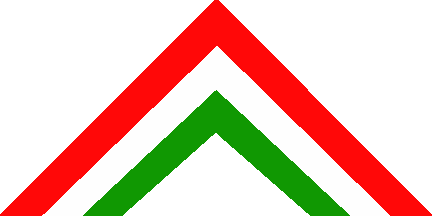
by Ferenc Gy. Valoczy, 2 July 2003
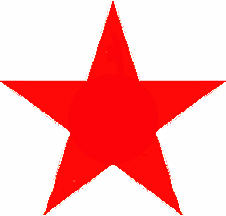
by Ferenc Gy. Valoczy, 2 July 2003
The Red Hungarian Air Corps (Vörös Légjárócsapat) was
formed in March 1919, and carried three styles of national
insignia. The first, consisting of (from the earliest)
red/white/green chevrons on the wings, was soon superseded by a
red star on white square. A variation existed on this style,
where a white star was placed on a red square on a Fokker D.VII.
Later camouflaged aircraft used a red star with a fine white
outline.
Representative types: Chevrons Aviatik Berg D.I; red star/white
square Fokker (MAG) D.VII, UFAG C.I, Hansa Brandenburg C.I; red
star/white outline Phnix C.I.
The prohibition of military aviation by the Allied Control
Commission meant that any air force activity had to be carried
out under civilian cover. Military aircraft carried registration
letters and numbers up to 1923. From 1924 until 1937 military
aircraft carried standard registrations in the style of H-Mxxx.
The Hungarian flag was used on the tails of aircraft from 1931.
Hungarian civil registrations changed to the HA-xxx form in 1933.
By 1934, the registrations were becoming smaller, and large code
letters began to make an appearance on the fuselage sides.
Individual squadron badges also began to be used.
Representative types: Hansa Brandenburg B.I, Udet U12, Bcker Bu
131, Fokker C.V, Heinkel He 46, Junkers Ju 52/3mg, Junkers Ju
86K, Fiat Cr-20, Fiat Cr-32, Fiat BR 2, Focke-Wulf Fw 56 Stsser,
Focke-Wulf Fw 58 Weihe, Messerschmitt Bf 108B Taifun.
During secret military exercises in the summer of 1931, a
Black St. Stephen's cross was painted over a square tricolour
(colours, from top, were red, white and green). This appeared on
aircraft fuselages. Rudder striping was also carried.
Representative types: WM-Fokker CVD.
Further secret military exercises in the autumn of 1932 saw
the appearance of a roundel that consisted of a green St.
Stephen's cross on a white roundel surrounded by a red outer
ring. This appeared on wings and fuselage. Rudder striping was
also carried. This marking was to be used in case of a
mobilisation for war, but in the event was not needed.
Representative types: WM-Fokker CVD.

by Zeljko Heimer, 2 November 2001
The overt emergence of the Hungarian Air Force led to the
re-introduction of the red/white/green chevron insignia. This
took the form of a triangle in the ratio of 2:1. This was applied
to both wing and tail surfaces. The chevron pointed in the
direction of flight. A camouflage finish was in use on most
aircraft by the time Hungarian forces occupied parts of Slovakia
in 1938.
Representative types: Reggiane Re 2000, Fiat Cr-32, Fiat Cr-42,
Heinkel He 70K, Heinkel He 112, Heinkel He 46E-2, Focke-Wulf Fw
56 Stsser, Savoia-Marchetti SM 75, Caproni Ca 135bis, Focke-Wulf
Fw 58, Weiss Manfred WM 21.
As an ally of Germany, Hungarian aircraft carried yellow bands on the cowling, wing tips and fuselage. After the invasion of the Soviet Union, it was discovered that the visibility of the chevron was poor, and many Hungarian aircraft were attacked by their German allies. Germany pressed for a unified insignia for all Axis countries, but this was resisted. The Hungarian General staff suggested a black-edged white cross on a green square outlined in red. Experiments showed that this did not solve the visibility problem.
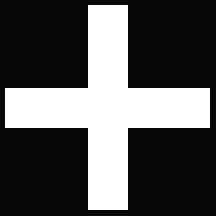
by Ferenc Gy. Valoczy, 2 July 2003
In late 1941/early 1942 a revised Hungarian insignia was
agreed. This consisted of a black square with white cross, to be
carried on the wings and fuselage of all Hungarian aircraft. The
Hungarian tricolour was to be applied on both the fin/rudder and
horizontal tailplanes. From 1944, many aircraft dispensed with
the tail tricolour markings. The white in the cross was sometimes
painted over in grey to reduce visibility.
Representative types: Messerschmitt Bf 109 (included variants
from D-1 up to G-14), Messerschmitt Bf 110G, Messerschmitt Me
210C, Reggiane Re 2000, Fiat CR 42, Focke-Wulf Fw 190F-8, Junkers
Ju 87B-2, Junkers Ju 86K-2, Caproni Ca 101, Focke-Wulf Fw 58,
Caproni Ca 135bis, Heinkel He 111P-2, Fiat G.12, Arado Ar 96A
& B, Focke-Wulf Fw 56 Stsser, Dornier Do 17K, Dornier Do
215B-4.
Some aircraft on the Eastern Front did not receive full
details of the new national insignia, and retained German
markings, their Hungarian nationality only being denoted by the
tricolour on their fin/rudder.
Representative types: Messerschmitt Bf 109F-4B.
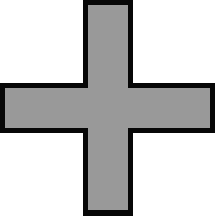
by Ferenc Gy. Valoczy, 2 July 2003
A variation of the white cross/black square was carried by
several German types due to a misinterpretation of the
regulations.
Representative types: Focke-Wulf Fw 189A-1, Messerschmitt Bf 109.
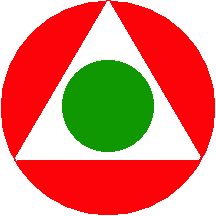
by Ferenc Gy. Valoczy, 2 July 2003
After WW2, military flying in Hungary was prohibited until
June 1947. The Hungarian Peoples Army introduced the next
marking, a red roundel with a white triangle and green centre
circle.
Representative types: Arado Ar 96A & B/Avia C-2, Fieseler Fi
156 Strch, UT-2.

by Ferenc Gy. Valoczy, 2 July 2003
To better reflect Hungary's communist government, the national
insignia was changed to a red star on a roundel, of which the
colours were (from outside) red, white, green and white. This
marking was also used on the tail, thus dispensing with the
tricolour flag.
Representative types: Arado Ar 96A & B/Avia C-2, Zlin Z 381
Fecske.
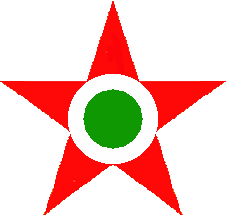
by Ferenc Gy. Valoczy, 2 July 2003
To avoid confusion with the Yugoslav national insignia, the
national markings were changed yet again. A white-outlined red
star with white and green circles inscribed would survive until
1990.
Representative types: Yak-9P, Ilyushin Il-2, Ilyushin Il-10, Mil
Mi-4, Mil Mi-8, Mikoyan Gurevich MiG-15, Mikoyan Gurevich MiG-21.
Rebel forces in the Hungarian uprising of October 1956 had the
use of some aircraft, and various types of marking were used.
These were usually hastily applied and many have not been
documented.
Representative types: Type 1 Mil Mi-4A; Type 2 Jak-11 lyv
(Buzzard); Type 3 Aero 45 Kócsag (Egret); Type 4 Daru II.
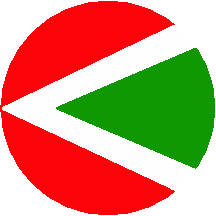
by Ferenc Gy. Valoczy, 2 July 2003
The end of communism in Hungary led to the re-introduction of
more traditional markings. A roundel within which was inscribed
the Hungarian chevron was used during 1990 as an interim
insignia.
Representative types: Mil Mi-8S, Mikoyan Gurevich MiG-21PFM.
The chevron mark has now been formally re-introduced as the
Hungarian Air Force marking. The chevron is, as before, based
upon a 2:1 ration triangle. The width of the red and white
stripes are one sixth of the triangles base. The marking is
surrounded by a 1 cm White border. Stencilling marks are often
visible on this border when the marking is applied.
Representative types: Mil Mi-8S, Mil Mi-24, Mikoyan Gurevich
MiG-21PFM, Mikoyan Gurevich MiG-29 & MiG-29UB.
According to Album 2000 [pay00]
- Aircraft marking - Triangular marking (as a note explains with
point always turned towards front) of red-white-green
"arowheads".
Zeljko Heimer, 2 November 2001
The Hungarian Air Forces 1920-1945 by Srhidai, Punka &
Kozlik, Hikoki 1996.
Small Air Forces Observer, No. 75.